Sant Ravidas: The Revolutionary Saint of Medieval India and His Enduring Legacy
Sant Ravidas stands as one of the most revolutionary and influential figures in medieval Indian history, a 15th-century saint, poet, and social reformer whose teachings continue to inspire millions across the world today. Born into the marginalized Chamar caste of leather workers in Varanasi, Ravidas transcended the rigid social hierarchies of his time to become a towering spiritual leader whose vision of an egalitarian society challenged the very foundations of caste-based discrimination. His profound contributions to the Bhakti movement, his revolutionary concept of Begumpura (a city without sorrow), and his enduring influence on contemporary social justice movements make him a figure of immense historical and contemporary significance.

Historical Background and Early Life
Birth and Family Origins
Sant Ravidas was born in 1377 CE in the village of Sir Govardhanpur (now known as Seer Goverdhanpur) near Varanasi, Uttar Pradesh. His birthplace, now called Shri Guru Ravidass Janam Asthan, has become a major pilgrimage site for his followers worldwide. His father was Santokh Dass (also referred to as Raghram in some sources) and his mother was Mata Kalsa Devi (also known as Mata Ghurbinia). wikipedia+4
The family belonged to the Chamar community, traditionally engaged in leather work and considered among the “untouchable” castes in the rigid Hindu social hierarchy. This profession involved processing dead animals and their skins, which made them socially ostracized and placed them at the bottom of the caste system. Despite these social constraints, Ravidas’s family environment was conducive to spiritual pursuits, as his father worked as a village headman (Sarpanch) in Raja Nagar Mal’s kingdom and maintained his traditional occupation of shoemaking and repairing. sieallahabad+3
Spiritual Awakening and Education
From childhood, Ravidas displayed an extraordinary inclination toward spiritual pursuits and showed little interest in his family’s traditional occupation of leather work. His naturally devotional temperament led him to spend considerable time with Hindu saints, sadhus, and ascetics along the banks of the river Ganges. This early exposure to spiritual discourse profoundly shaped his philosophical outlook and devotional practices. wikipedia+1
According to medieval biographical texts, including the Anantadas Parcai and Bhaktamal, Ravidas became a disciple of Ramananda, the prominent Brahmin saint who played a crucial bridging role between the South Indian and North Indian Bhakti traditions. This guru-disciple relationship was revolutionary for its time, as it transcended caste boundaries and demonstrated that spiritual knowledge could flow from higher castes to lower castes and vice versa. sieallahabad+1
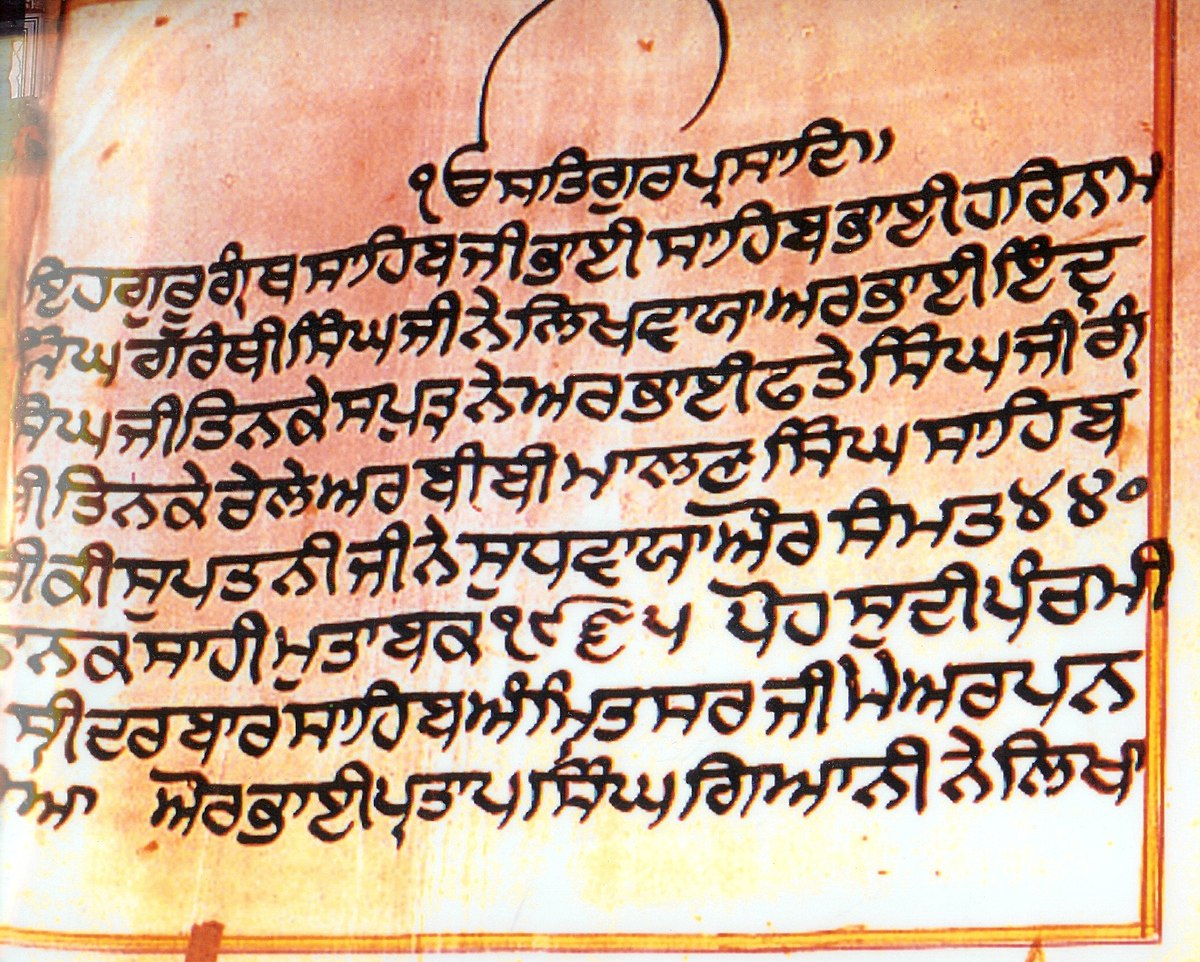
Manuscript page of Guru Granth Sahib containing hymns by Sant Ravidas in Gurmukhi script commons.wikimedia
Philosophical Framework and Spiritual Teachings
Nirguna Bhakti and Devotional Philosophy
Sant Ravidas was a prominent advocate of Nirguna Bhakti (devotion to the formless God), aligning himself with the broader sant tradition that included luminaries like Kabir and Guru Nanak. His philosophical approach emphasized direct, personal devotion to a formless divine presence that transcended ritual worship, idol veneration, and priestly intermediation. plutusias+1
His teachings centered on several key principles: wikipedia
- The oneness, omnipresence, and omnipotence of God
- The inherent divinity of the human soul as a particle of God
- Rejection of caste-based spiritual hierarchy
- The primacy of inner purity over external ritual observance
- Liberation through selfless devotion and surrender
One of his most famous philosophical statements encapsulates his revolutionary approach: “Man changa to kathoti me Ganga” (If the mind is pure, then even the water in a cobbler’s leather-soaking pot is as sacred as the Ganges). This profound teaching challenged the orthodox notion that spiritual purity was determined by external factors or caste status, asserting instead that true sanctity resided in inner spiritual refinement. indianexpress
The Concept of Sahaj and Mystical Union
Ravidas frequently employed the term “Sahaj” in his compositions, referring to a mystical state of natural spiritual union where the individual consciousness merges with universal consciousness. This concept, borrowed from Nath Yoga philosophy, emphasized the possibility of achieving divine realization through spontaneous, effortless devotion rather than complex ritualistic practices. wikipedia
His mystical poetry often described the indescribable nature of divine union: “What shall I sing? Singing, singing I am defeated. How long shall I consider and proclaim: absorb the self into the Self? This experience is such, that it defies all description. I have met the Lord, Who can cause me harm?”. Such verses demonstrated his direct experiential knowledge of spiritual transcendence and his ability to articulate the ineffable aspects of mystical experience. wikipedia
Social Revolutionary and Caste Reformer
Challenging Brahminical Supremacy
Sant Ravidas emerged as a formidable challenger to the rigid caste system and Brahminical orthodoxy during an era when such challenges were not only socially unacceptable but potentially dangerous. His approach was notably sophisticated, avoiding direct confrontational attacks on upper castes while systematically undermining the ideological foundations of caste-based superiority. feminisminindia
Rather than directly attacking the privileged classes, Ravidas enhanced the dignity and self-respect of marginalized communities through his teachings and personal example. His strategy involved demonstrating that spiritual excellence, moral integrity, and divine favor were not determined by birth but by devotion, character, and service to humanity. sieallahabad
One of his most revolutionary acts was adopting the dress and symbols of the Brahminical class while continuing his traditional leather work. This symbolic resistance challenged the visual markers of caste hierarchy and asserted the right of all individuals to spiritual dignity regardless of their occupational background. feminisminindia
The Begumpura Vision: A Utopian Alternative
Sant Ravidas’s most profound contribution to social reform was his articulation of “Begumpura” (the city without sorrow), a comprehensive vision of an egalitarian society that served as a radical alternative to the existing caste-hierarchical order. forwardpress+2
In his famous composition describing Begumpura, Ravidas envisioned a society characterized by: socialresearchfoundation+1
- Complete absence of caste-based discrimination and untouchability
- Economic equality with no taxation or exploitation
- Social harmony without fear, terror, or systematic oppression
- Universal access to resources and opportunities
- Merit-based rather than birth-based social organization
- Freedom of movement and occupation for all citizens
The Begumpura concept was remarkable for its time, predating modern socialist and egalitarian political theories by centuries. As one scholar noted, “Ravidas pioneered socialism, envisioning social justice through his concept of Begumpura long before the global socialist movement gained traction in the post-Marxian era”. indianexpress
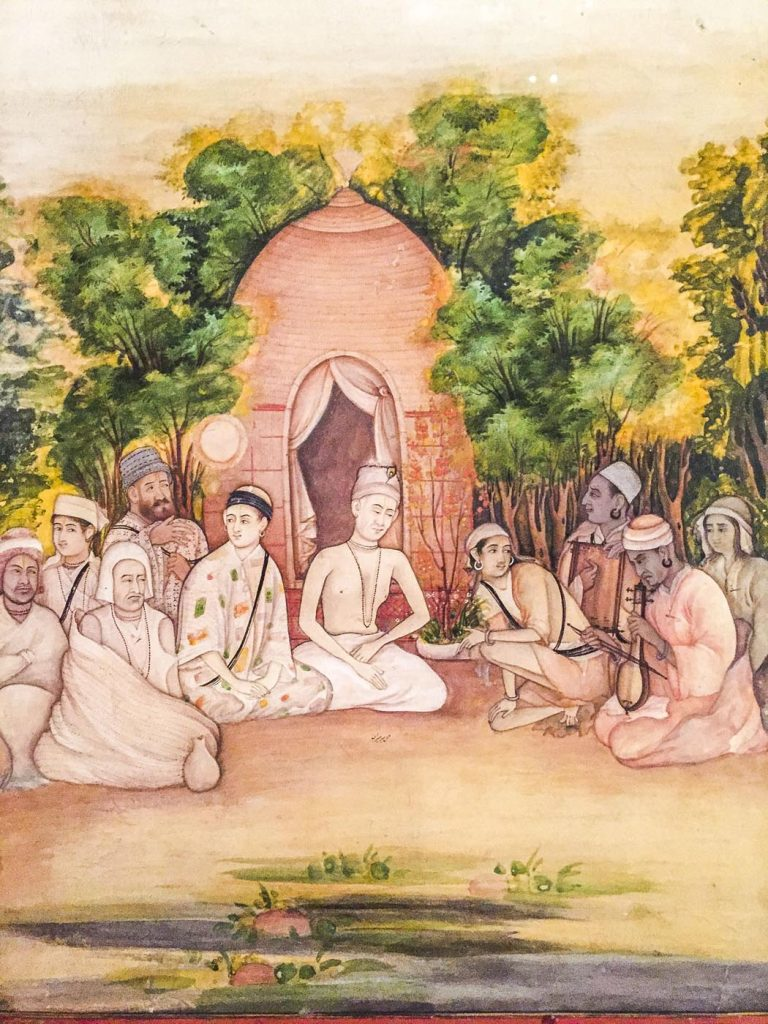
Medieval Indian saints and devotees engaged in a devotional gathering reflecting Bhakti movement traditions hinduismtoday
Literary Contributions and Poetic Legacy
Devotional Poetry and Spiritual Compositions
Sant Ravidas was an extraordinarily gifted poet whose compositions combined profound spiritual insight with accessible vernacular expression. His literary works, composed primarily in Hindi and Awadhi languages, made complex theological concepts available to common people regardless of their educational background. eduindex
His poetry is characterized by several distinctive features:
- Direct, conversational tone with the divine
- Integration of personal experience with universal spiritual truths
- Use of everyday metaphors and imagery drawn from his craft
- Emphasis on humility and surrender
- Rejection of ritualistic complexity in favor of simple devotion
Inclusion in Guru Granth Sahib
One of the most significant recognitions of Sant Ravidas’s spiritual contributions is the inclusion of 41 of his hymns in the Guru Granth Sahib, the central religious scripture of Sikhism. These compositions are distributed across various ragas (musical modes) including Siri, Gauri, Asa, Gujari, Sorath, Dhanasari, and others, demonstrating both their musical sophistication and theological depth. britannica+2
The inclusion of Ravidas’s hymns in the Sikh scripture is particularly significant because it represents formal recognition by another religious tradition of his spiritual authority and theological contributions. This integration demonstrates the universal appeal of his teachings and their compatibility with other devotional traditions focused on divine unity and social equality. wikipedia
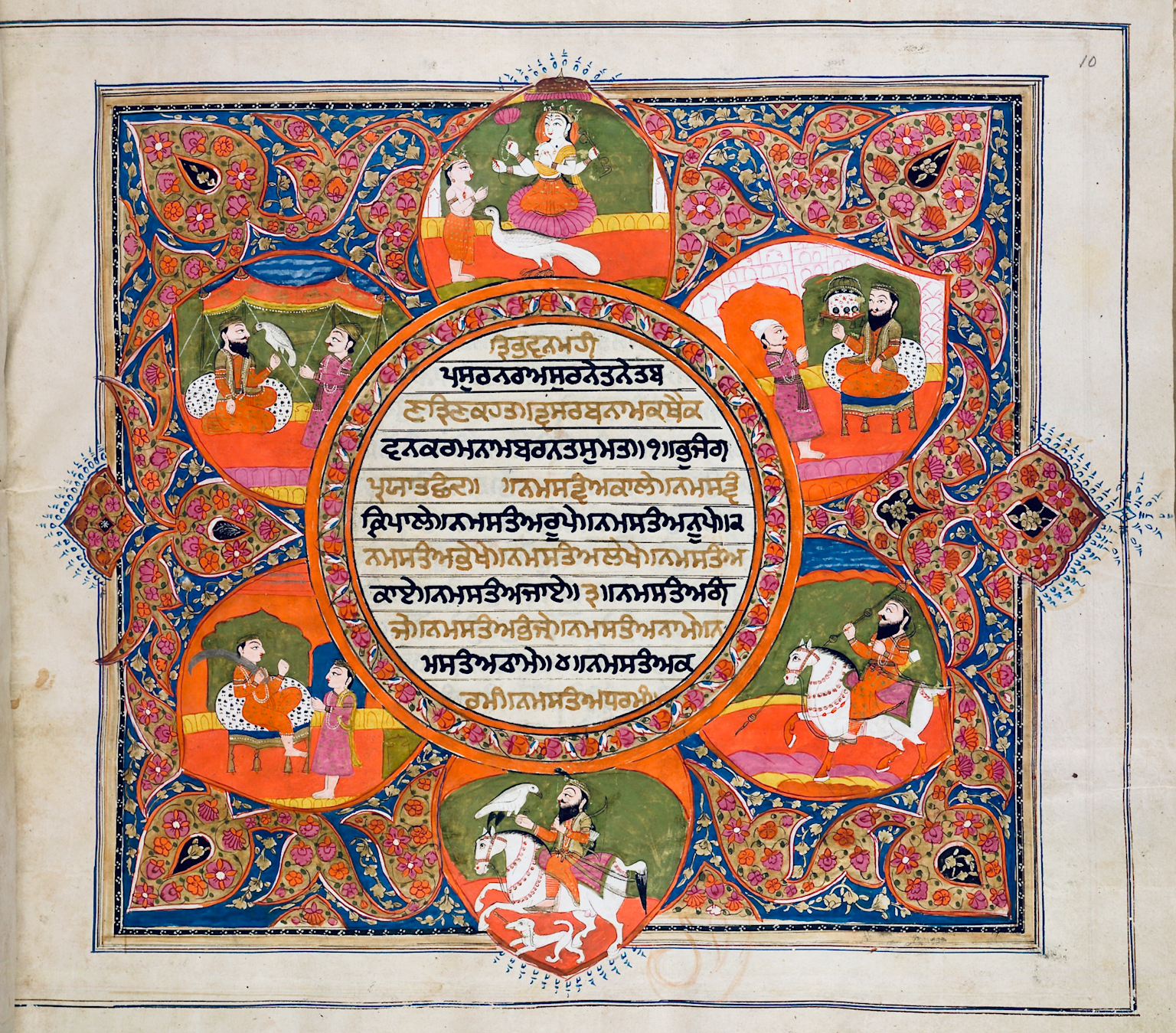
Illustrated Sikh manuscript page with Gurmukhi text and vivid depictions of Sikh Gurus and saints, reflecting Sikh religious heritage commons.wikimedia
Thematic Analysis of His Poetry
Ravidas’s poetic corpus encompasses several recurring themes that reflect his spiritual philosophy and social vision:
Divine Love and Surrender: Many of his compositions express complete surrender to divine will and the joy of spiritual union. He wrote: “I am making an effort to emancipate myself, but when I attain freedom then who will adore Thee?”, demonstrating the paradox of spiritual liberation and continued devotion.sieallahabad
Social Justice and Equality: His verses consistently challenged caste-based discrimination. One powerful composition states: “My caste is low, my actions are low, and even my profession is low, Says Raidas, yet the Lord has raised me high”. This verse simultaneously acknowledged social reality while asserting spiritual transcendence of caste limitations. sieallahabad
Universal Brotherhood: Ravidas emphasized the fundamental unity underlying apparent religious and social divisions: “Krishna, Karim, Ram, Hari, Raghav, jab lag ek na pekha. Ved Kateb Kuran, Puranan, sahaj ek nahin dekha” (Until you see the one in Krishna, Karim, Ram, Hari, Raghav, you haven’t seen the simple truth in Vedas, Bible, Quran, and Puranas). This verse demonstrated his inclusive theological vision that recognized divine presence across religious traditions. mynachiketa
Contributions to the Bhakti Movement
Role in North Indian Devotional Tradition
Sant Ravidas played a crucial role in shaping the North Indian Bhakti movement, particularly within the Nirguna sampradaya (formless worship tradition) alongside contemporaries like Kabir and predecessors like Ramananda. His contributions were distinctive in several ways: plutusias+1
Democratization of Spirituality: Ravidas demonstrated that profound spiritual realization was accessible to individuals from all social backgrounds, effectively challenging the monopoly of upper castes over religious authority and spiritual guidance. feminisminindia+1
Integration of Social Reform with Spiritual Practice: Unlike some Bhakti saints who focused primarily on personal devotion, Ravidas consistently linked spiritual development with social transformation, arguing that true devotion required working toward social justice and equality. sieallahabad+1
Vernacular Theological Expression: His use of simple, direct language made complex theological concepts accessible to ordinary people, contributing to the democratization of religious knowledge and spiritual discourse. eduindex+1
Influence on Contemporary and Later Saints
Ravidas’s influence extended to numerous other spiritual figures of his era and beyond. Meera Bai, the renowned Rajput princess-saint, is believed to have considered Ravidas her spiritual guru, demonstrating that his teachings transcended not only caste boundaries but also gender and social status limitations. believersias+1
The connection between Ravidas and Guru Nanak, the founder of Sikhism, represents one of the most significant inter-traditional influences in Indian spiritual history. While historical documentation of their direct meeting remains debated, the inclusion of Ravidas’s hymns in Sikh scripture and the similarity of their teachings on social equality and divine unity suggest substantial theological convergence. sieallahabad+1
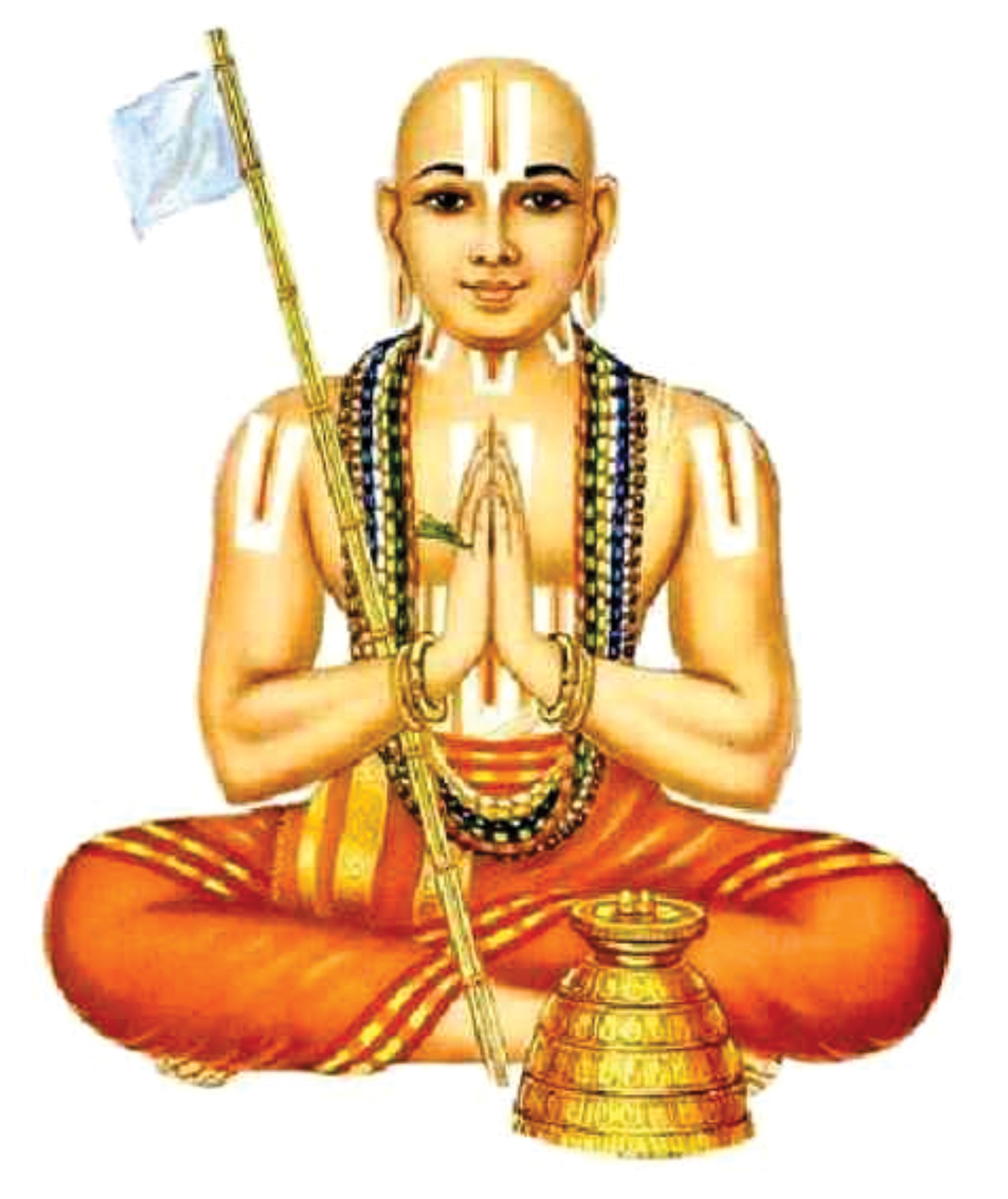
Illustration of a Bhakti movement saint, possibly Sant Ravidas, symbolizing devotion and spirituality iasgyan
The Ravidassia Religious Movement
Historical Development and Contemporary Manifestation
The teachings of Sant Ravidas have given rise to a distinct religious movement known as Ravidassism or the Ravidassia religion, which has gained particular prominence in contemporary India and among diaspora communities worldwide. wikipedia+2
The Ravidassia movement experienced significant development during the 20th and 21st centuries, with estimates suggesting between two and five million followers globally. The movement gained particular momentum following the 2009 assassination of Ravidassia leader Sant Ramanand in Vienna, which catalyzed the community’s assertion of a distinct religious identity separate from mainstream Sikhism. drishtiias+1
Institutional Development and Religious Practice
The Ravidassia community has established numerous institutional structures to preserve and propagate Ravidas’s teachings:
Dera Sachkhand Ballan: Located in Jalandhar, Punjab, this is considered the largest Ravidassia center with approximately 20 lakh (2 million) followers worldwide. Founded in the early 20th century by Baba Sant Pipal Das, it played a crucial role in organizing the Ravidassia community and developing distinct religious practices. drishtiias
Amritbani Guru Ravidass Ji: Following their separation from mainstream Sikhism, Ravidassia communities compiled their own holy book, the “Amritbani Guru Ravidass Ji”, containing 200 hymns of Guru Ravidas. This scripture has replaced the Guru Granth Sahib in many Ravidassia temples and represents a significant step toward religious autonomy. wikipedia+1
Global Presence: Ravidassia temples and communities have established significant presence in countries including the United Kingdom, Canada, United States, and other nations with substantial Indian diaspora populations. ijirt+2

Illustration of Sant Ravidas adorned with a flower garland symbolizing reverence and devotion during Ravidas Jayanti economictimes
Modern Relevance and Social Impact
Influence on Dalit Consciousness and Identity Formation
Sant Ravidas has emerged as a central figure in contemporary Dalit consciousness and identity formation, serving as a source of spiritual inspiration and social empowerment for marginalized communities. indianexpress+3
Historical Reclamation: The Ravidassia movement represents a significant effort to reclaim Dalit history and spiritual heritage, asserting that marginalized communities have their own rich tradition of spiritual leadership and social reform rather than being passive recipients of upper-caste religious instruction. ijirt+1
Alternative Religious Identity: For many Dalits, embracing Ravidassia identity offers an alternative to mainstream Hinduism that has historically excluded and marginalized them, while also providing a distinct identity separate from conversion to other religions like Buddhism or Christianity. impriindia+1
Inspiration for Social Justice Movements: Ravidas’s teachings have inspired numerous modern social justice leaders. Dr. B.R. Ambedkar was deeply influenced by Sant Ravidas’s vision of equality and social transformation. Similarly, leaders like Ram Manohar Lohia and Kanshi Ram drew inspiration from his egalitarian ideals. haryanarajbhavan+1
Contemporary Political and Social Significance
The teachings and legacy of Sant Ravidas continue to play important roles in contemporary Indian politics and social movements:
Government Recognition: Recent years have seen increased official recognition of Sant Ravidas’s contributions. Prime Minister Narendra Modi has delivered public addresses emphasizing Ravidas’s role as a social reformer and his vision of an egalitarian society. Several state governments have declared Ravidas Jayanti as a public holiday. indianexpress+1
Educational and Cultural Programs: Various institutions have developed educational curricula and cultural programs highlighting Ravidas’s contributions to Indian spiritual and social thought, helping to integrate his teachings into mainstream historical and religious discourse. haryanarajbhavan+1
International Diaspora Influence: Ravidassia communities in countries like the United Kingdom, Canada, and the United States have become increasingly organized, establishing temples, cultural centers, and advocacy organizations that promote both religious practice and social justice causes. wikipedia+1
Ravidas Jayanti: Annual Celebrations and Cultural Significance
Festival Observance and Ritual Practices
Ravidas Jayanti, celebrated annually on Magh Purnima (the full moon day in the month of Magh, typically falling in January or February), has become one of the most significant festivals for the Ravidassia community and Sant Ravidas devotees worldwide. vedantu+3
The celebrations typically include:
Nagar Kirtans and Processions: Grand processions featuring devotional singing and carrying portraits of Sant Ravidas through cities and villages, particularly prominent in Punjab, Haryana, Uttar Pradesh, and other North Indian states. abhibus+1
Temple Gatherings and Prayer Services: Special ceremonies at Ravidas temples and gurdwaras featuring recitation of his hymns, spiritual discourses, and community prayers. paytm+1
Langar (Community Meals): Free community kitchens serving meals to all attendees regardless of caste, creed, or social status, embodying Ravidas’s vision of social equality and service. abhibus+1
Pilgrimage to Varanasi: Thousands of devotees undertake pilgrimages to Shri Guru Ravidass Janam Asthan in Varanasi, his birthplace, making it one of the largest annual religious gatherings associated with his legacy. drishtiias+1
Educational and Cultural Programs
The annual celebrations also feature extensive educational and cultural programming designed to promote understanding of Ravidas’s teachings and their contemporary relevance:
Scholarly Discourses: Religious leaders and academic scholars conduct lectures and discussions on Ravidas’s philosophy, poetry, and social contributions. vedantu+1
Cultural Performances: Music, dance, and theatrical performances celebrating his life and teachings, often featuring adaptations of his devotional poetry and biographical narratives. abhibus
Social Service Activities: Community service projects including healthcare camps, educational programs, and assistance to marginalized populations, reflecting his emphasis on seva (selfless service). vedantu+1
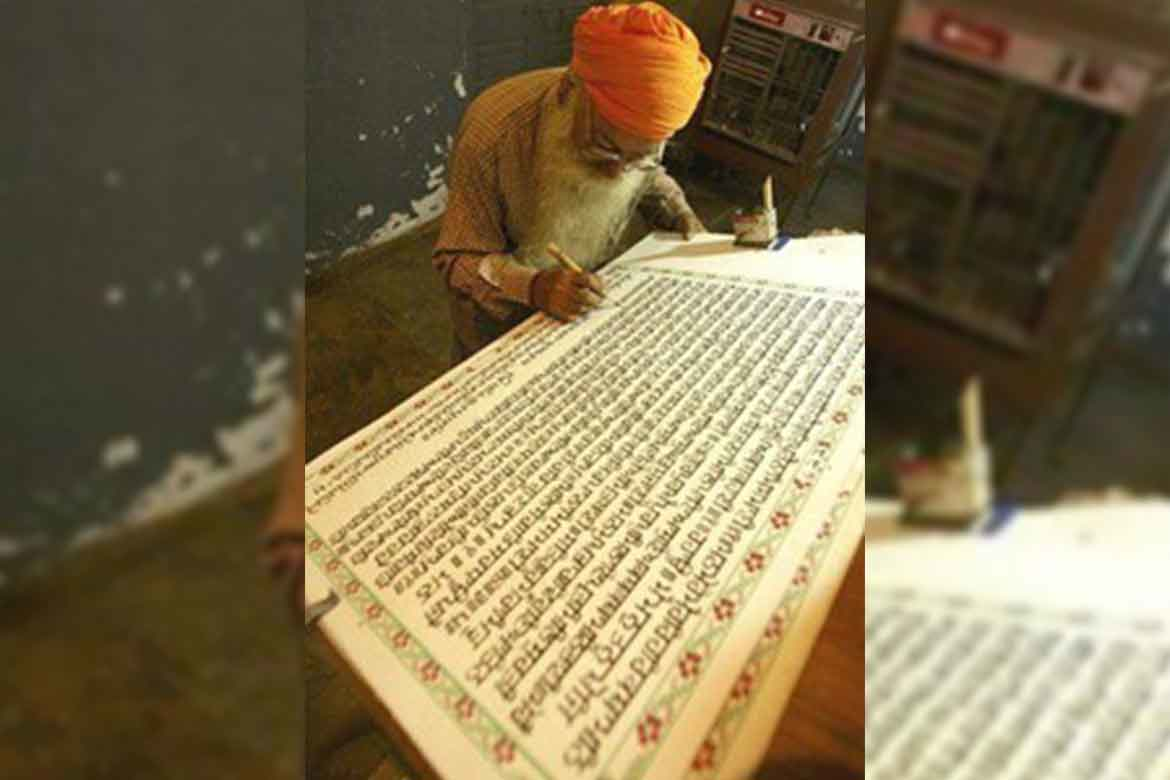
A scribe writing Guru Granth Sahib scripture featuring hymns by Sant Ravidas nishaannagaara
Comparative Analysis: Ravidas and Other Bhakti Saints
Similarities and Distinctive Contributions
While Sant Ravidas shared many characteristics with other Bhakti movement saints, his contributions possessed several distinctive features that set him apart:
Common Ground with Contemporary Saints: Like Kabir, Tukaram, and other Bhakti saints, Ravidas emphasized direct devotion to a formless God, rejection of ritualistic complexity, and the use of vernacular languages for spiritual expression. His theological position aligned with the broader Nirguna tradition in emphasizing divine transcendence of anthropomorphic limitations. plutusias+1
Unique Social Revolutionary Approach: However, Ravidas’s approach to social reform was uniquely sophisticated in its combination of spiritual teaching with systematic challenge to caste hierarchy. Unlike saints who focused primarily on individual salvation, he articulated a comprehensive vision of societal transformation through the Begumpura concept. feminisminindia+1
Integration of Occupational Identity with Spiritual Practice: Ravidas uniquely demonstrated how traditional occupations, even those considered “polluting” by orthodox standards, could be integrated with the highest levels of spiritual practice. His famous statement about finding the Ganges in a cobbler’s water pot exemplified this revolutionary integration. theaidem+1
Historical Impact and Legacy Comparison
When compared to other medieval saints, Ravidas’s historical impact demonstrates both continuity with and divergence from broader Bhakti movement patterns:
Scriptural Preservation: Like other major Bhakti saints, Ravidas’s compositions were preserved in authoritative religious texts, most notably the Guru Granth Sahib. However, the later development of a separate Ravidassia scripture (Amritbani) represents a unique development in his tradition. wikipedia+1
Institutional Development: While many Bhakti saints inspired devotional traditions, the development of a distinct Ravidassia religion with separate institutional structures represents a unique trajectory in the evolution of his legacy. understandingreligion+1
Contemporary Social Movement Integration: Ravidas’s teachings have been more systematically integrated into contemporary social justice and Dalit rights movements than those of most other medieval saints, reflecting the particular relevance of his social revolutionary message. indianexpress+2
Theological Debates and Interpretations
Historical Controversies and Scholarly Perspectives
Academic and religious scholars have identified significant controversies in interpreting Sant Ravidas’s life, teachings, and historical significance, reflecting broader debates about caste, religion, and social reform in Indian history. wikipedia+1
Divergent Biographical Traditions: Ravindra Khare and other scholars have noted that two fundamentally different versions of Ravidas’s life and philosophy emerge from historical sources. The 17th-century Bhaktamal text portrays him as aligned with Vedic traditions and accepted by Brahminical society, while 20th-century Dalit community sources emphasize his rejection of orthodox Hindu practices and his resistance to Brahminical authority. wikipedia
Relationship with Orthodox Hinduism: This scholarly divide reflects deeper questions about Ravidas’s relationship to mainstream Hindu traditions. Some sources suggest he worked within existing religious frameworks to reform them gradually, while others argue he represented a fundamental challenge to orthodox Hindu social and religious order. sieallahabad+1
Contemporary Political Implications: These differing interpretations have significant contemporary relevance, as different political and social groups invoke Ravidas’s legacy to support varying approaches to caste reform, religious identity, and social transformation. ijirt+1
Theological Significance in Multiple Religious Traditions
Sant Ravidas’s theological contributions have been recognized and interpreted differently across various religious communities:
Sikh Integration: The inclusion of his hymns in the Guru Granth Sahib represents formal recognition of his spiritual authority within Sikhism, where he is honored as one of the important Bhagats (devotee-saints) whose teachings complement those of the Sikh Gurus. britannica+2
Hindu Bhakti Tradition: Within broader Hindu devotional traditions, Ravidas is recognized as a significant sant whose teachings exemplify the democratizing potential of Bhakti spirituality. plutusias+1
Distinct Ravidassia Religion: The development of a separate Ravidassia religious identity represents a unique trajectory in which his teachings have become the foundation for an autonomous religious tradition. wikipedia+1
Global Influence and Contemporary Movements
International Ravidassia Communities
The global spread of Ravidassia communities represents one of the most significant contemporary developments in the evolution of Sant Ravidas’s legacy:
United Kingdom: The UK hosts one of the largest Ravidassia populations outside India, with the 2011 census recording 11,058 individuals identifying as Ravidassia rather than Sikh or Hindu. Major centers exist in Birmingham, London, Leicester, and other cities with substantial South Asian populations. wikipedia
North America: Significant Ravidassia communities have developed in Canada and the United States, particularly in cities like Toronto, Vancouver, Sacramento, and New York, where they have established temples, cultural centers, and advocacy organizations. ijirt
Community Organization: These international communities have developed sophisticated organizational structures including religious institutions, cultural associations, and advocacy groups that work to preserve Ravidassia identity while promoting social justice causes in their host countries. bbc+1
Contemporary Social Justice Applications
Sant Ravidas’s teachings continue to inspire contemporary social justice movements both in India and internationally:
Dalit Rights Activism: His vision of Begumpura serves as a foundational inspiration for contemporary Dalit rights organizations working to eliminate caste-based discrimination and promote social equality. indianexpress+1
Interfaith Dialogue: His emphasis on religious unity and his recognition across multiple faith traditions makes him a valuable figure for contemporary interfaith dialogue and cooperation. mynachiketa+1
Human Rights Advocacy: International Ravidassia communities have increasingly engaged with broader human rights movements, drawing connections between historic caste oppression and contemporary forms of racial and ethnic discrimination. ijirt
Conclusion: The Enduring Legacy of a Revolutionary Saint
Sant Ravidas stands as one of history’s most remarkable examples of how spiritual depth and social revolutionary vision can combine to create enduring transformation. Born into the most marginalized section of medieval Indian society, he transcended every limitation imposed by caste hierarchy to become a spiritual teacher whose influence spans centuries and continents.
His revolutionary contributions operate on multiple interconnected levels. As a spiritual teacher, he demonstrated that divine realization was accessible to all human beings regardless of social background, effectively democratizing access to the highest forms of religious experience. His concept of Nirguna Bhakti provided a theological framework that bypassed caste-based religious hierarchy while maintaining profound devotional depth.
As a social reformer, his vision of Begumpura articulated one of history’s earliest comprehensive models of an egalitarian society, predating modern democratic and socialist political theories by centuries. His approach avoided direct confrontation with existing power structures while systematically undermining their ideological foundations through spiritual teaching and personal example.
As a literary figure, his poetry achieved the remarkable feat of making complex theological concepts accessible to ordinary people while maintaining sophisticated artistic quality. The inclusion of his hymns in the Guru Granth Sahib represents formal recognition of his literary and spiritual contributions across religious boundaries.
His contemporary relevance is perhaps most evident in the continued growth of Ravidassia communities worldwide and the integration of his teachings into modern social justice movements. From the streets of Wolverhampton to the political discourse of contemporary India, his vision of human equality and social transformation continues to inspire those working toward more just societies.
The establishment of a distinct Ravidassia religion in the 21st century demonstrates how his teachings remain vibrant and capable of generating new institutional forms adapted to contemporary circumstances. With millions of followers worldwide, his spiritual legacy continues to evolve while maintaining fidelity to his core message of universal human dignity.
Sant Ravidas’s life and teachings offer profound lessons for contemporary challenges. In an era marked by persistent social inequality, religious conflict, and cultural division, his example demonstrates how spiritual depth can fuel social transformation, how marginalized communities can assert their dignity and rights, and how ancient wisdom can address contemporary challenges.
His vision of Begumpura—a society free from discrimination, exploitation, and fear—remains as relevant today as it was six centuries ago. As humanity continues to struggle toward more equitable social arrangements, Sant Ravidas’s revolutionary spirituality provides both inspiration and practical guidance for creating societies that honor the inherent dignity and potential of every human being.
The enduring power of his legacy lies not only in his historical contributions but in the continued capacity of his teachings to inspire new generations of spiritual seekers and social reformers. In honoring Sant Ravidas, we celebrate not only a remarkable individual but a vision of human possibility that transcends the limitations of caste, creed, and social circumstance to affirm the fundamental unity and dignity of all human life.
- https://en.wikipedia.org/wiki/Ravidas
- https://www.sieallahabad.org/hrt-admin/book/book_file/a88a3a021fbfd50bb587f6e725bdcc22.pdf
- https://believersias.com/blogsaint-ravidas/
- https://www.ambedkaritetoday.com/2019/04/about-ravidas-life-history-biography-ravidas-jayanti.html
- https://vajiramandravi.com/current-affairs/guru-ravidas/
- https://www.britannica.com/biography/Ravidas
- https://plutusias.com/wp-content/uploads/2025/02/Plutus-IAS-Current-Affairs-ENG-15_Feb_-2025.pdf
- https://www.poojn.in/post/33226/ravidass-philosophy-key-themes-and-concepts-explained
- https://en.wikipedia.org/wiki/Ravidassia
- https://indianexpress.com/article/cities/chandigarh/guru-ravidass-revolutionary-sage-redefined-bhakti-social-order-9829801/
- https://feminisminindia.com/2019/02/19/sant-ravidas-and-his-fight-against-casteism/
- https://www.forwardpress.in/2019/03/raidas-saheb-and-the-idea-of-begumpura/
- https://indianexpress.com/article/opinion/columns/sant-ravidas-birth-anniversary-imagination-begumpura-relevant-caste-ridden-society-9831900/
- http://www.socialresearchfoundation.com/upoadreserchpapers/4/471/211116031735seeking%20begumpura_%20the%20vision%20of%20utopian%20ideology%20in%20guru%20ravi%20dass%20bani%20.docx.pdf
- https://eduindex.org/2024/10/02/ravidas-a-spiritual-icon-and-social-reformer/
- https://en.wikipedia.org/wiki/Guru_Granth_Sahib
- https://www.sikhnet.com/news/shri-ravidass-ji
- https://www.mynachiketa.com/moral-stories/dohe/english/ravidas-ke-dohe
- https://plutusias.com/saint-ravidas-the-mystic-poet-saint-of-the-bhakti-movement/
- https://socialstudiesfoundation.org/2023/12/19/sant-ravidas-2/
- https://theaidem.com/en-book-baithak-sant-ravidas-life-and-writings-sadanand-shahi-transcript/
- https://ijirt.org/publishedpaper/IJIRT180359_PAPER.pdf
- https://www.drishtiias.com/daily-news-analysis/ravidassias-of-punjab
- https://www.bbc.com/news/uk-england-67559084
- https://www.arfjournals.com/image/catalog/Journals%20Papers/SCDI/2022/No%201%20(2022)/9_Ramu%20Kr%20Das.pdf
- https://www.impriindia.com/insights/sant-ravidas-and-the-dalit-struggle/
- https://haryanarajbhavan.gov.in/sant-shri-guru-ravidas-a-champion-of-equality-and-inclusion-honble-governor/
- https://www.vedantu.com/blog/guru-ravidas-jayanti
- https://www.abhibus.com/blog/guru-ravidas-jayanti/
- https://paytm.com/blog/holiday-list/guru-ravidas-jayanti-festival/
- https://www.ndtv.com/india-news/guru-ravidas-jayanti-date-history-significance-of-the-day-3754764
- https://www.understandingreligion.org.uk/p/ravidassia-religion/
- https://stories.gaathastory.com/celebrating-guru-ravidas-jayanti
- https://www.gulmohurquarterly.com/poetry/four-poems-sant-raidas-issue-14
- https://www.jagatgururampalji.org/en/great-devotees/sant-ravidas/
- https://economictimes.com/news/new-updates/guru-ravidas-jayanti-2025-here-is-the-history-significance-date-quotes-and-wishes/articleshow/118160346.cms

















